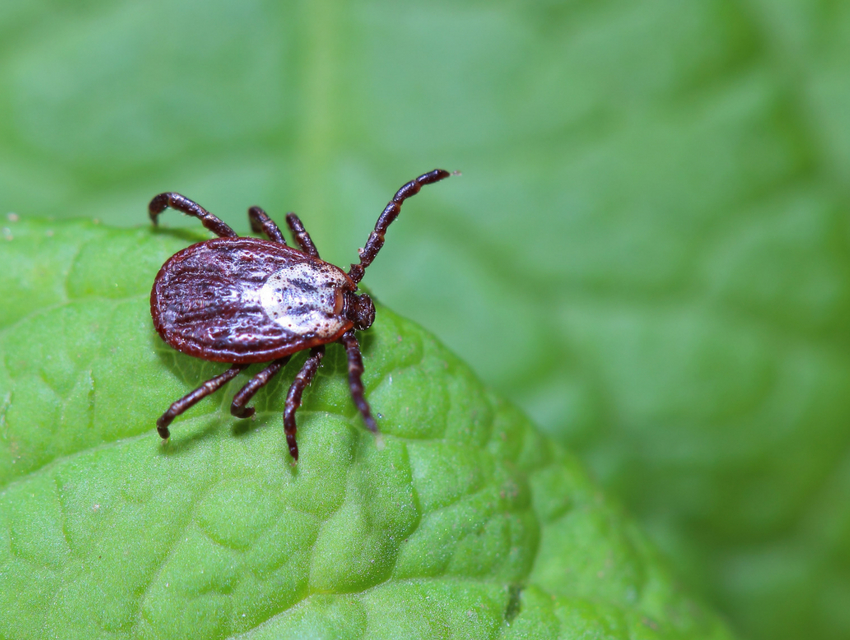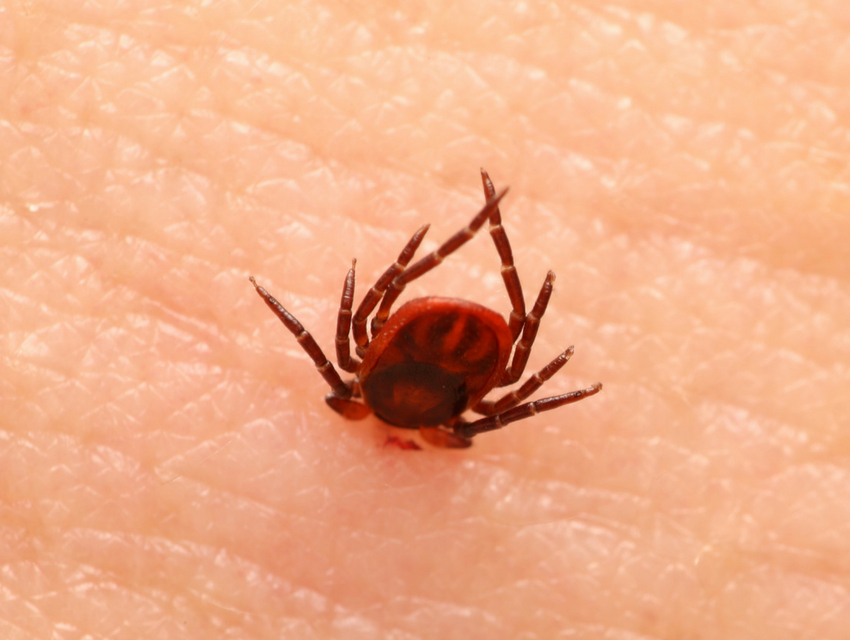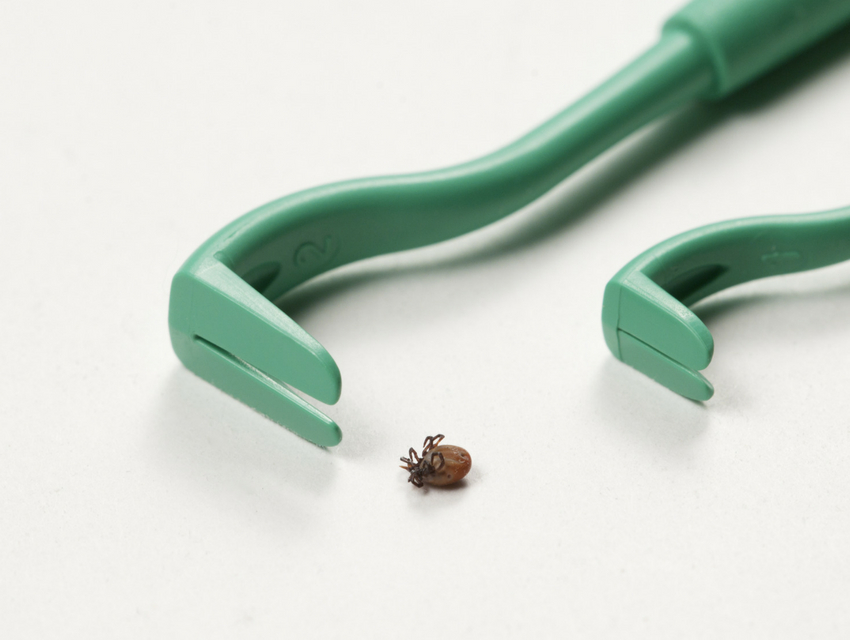Fight Ticks Naturally: How to Prevent Tick Bites and Safe Tick Removal
Lyme disease rates are increasing nationwide. Here’s what you can do

None of us really likes ticks, and why should we? Ticks are responsible for more than just being gross, drinking our (and our pets’) blood, and making us itch. Ticks are known to carry up to 12 different diseases that can affect humans or animals.
Preventing tick bites isn’t difficult, you just have to remember to take certain precautions and remain aware of your surroundings. And it’s worth your time to do so!
The Problem With Ticks
Tick bites can be dangerous. More dangerous than many of us realize in fact.
Ticks are one of the main culprits for spreading Lyme disease, a health problem of epidemic proportions. Lyme disease is more widespread than breast cancer these days, and those tiny ticks are behind most cases.
Plus, this is not all ticks can give you. You can also end up with other serious infectious diseases including:
♦ Spotted fever rickettsiosis
♦ Colorado tick fever
♦ Anaplasmosis
♦ Babesiosis
♦ Ehrlichiosis
♦ Rocky Mountain spotted fever
That said, lyme disease is the most common tick-borne illness and these others are rare in comparison. Lyme disease causes headaches, persistent fevers, allergic reactions, rashes, chronic joint pain and swelling, and serious neurological disorders.
As if this list wasn’t troubling enough, what makes Lyme disease even more worrisome is the fact that it is difficult to diagnose.

Cases of Lyme disease caused by ticks seem to be clustered in the northeastern part of the country. That being said, everyone should be aware of the disease and the role ticks play because, according to the CDC, there has been at least one tick-related case in every state.
The CDC has also noted that there appears to be an upward trend in these cases, so tick populations and Lyme disease occurrences are closely monitored.
Checking for Ticks
Ticks are more active during warm, summer months, as this is when they begin to hatch and start looking for their first meal. An engorged tick is easier to spot because of how swollen they become when full.
Some, however, are as small as the head of a pin, ad they prefer to hide out in areas of your body that are warm, moist, and covered up.
Showering helps to remove any unhatched ticks, but if you live in one of the riskier states, you need to perform routine checks. The places ticks love the most (and the places you need to check most often) are the nape of your neck and in your hair.
Ticks also like hiding behind your arms and knees, in or around your ears, in your belly button, between the legs, and around your waist.
The first time you see a tick feasting on your skin, you are allowed to freak out. It looks like something out of a horror movie. After a moment, though, you need to take a deep breath and remain calm.
If you live in any of the high-risk areas, chances are you will be a pro tick-handler in no time and can spot and remove them faster than you can tie your own shoes.
When you do spot a tick, there are a few simple steps to remember to get rid of them.

First you need to check if the tick is attached. If it is small, flat and moving around, chances are it has not bitten into any flesh recently.
If it is round and full, then it likely just finished a feast on one of your loved ones or the family pet.
If it is unattached, you need to resist the urge to kill it. You want to squish it or burn it, but it will be more useful to grab it with tweezers, place it in a bag and freeze. This not only kills the tick, but it can come in handy for identification purposes and potential treatments, should anybody start to develop any symptoms of a bite.
If the tick has managed to attach on to a loved one, the procedure is a little different.
Tick Removal: How to Do It and What Not to Do
If you live in tick country, you are probably aware of all the home remedies and traditional methods for tick removal that have been passed down through generations. You have been told to burn the tick, pour essential oils on it, and even grease it up with Vaseline.
Unfortunately, most of these do more harm than good. These actions can irritate the tick, and its natural response is to vomit into your skin.
Yeah, that’s not a typo: ticks actually throw up inside of you when disturbed. The stomach contents of a tick contain harmful pathogens, and these are released right into your skin.
It has been said you can use tweezers to pull it straight out. This does not always work, and you may end up stuck with the tick’s mouth embedded in your skin. Tick vomit and a tick’s mouth are not ideal skin accessories.
What you want to do instead is use a specially-designed tick removal device. It looks like a spork and fits between the tick and your skin.
Once gently twisted, the device forces the tick to release its grip. The prongs on each side make sure the tick’s mouth does not bend too far, thus removing the risk of it snapping off.

For those of you living in the same states that ticks favor, it might be a clever idea to keep one of these tick “sporks” on your keychain.
Tick Prevention
Being aware of your surroundings is the best way to be proactive. Even if you haven’t met any ticks yet, it is a good idea to take action and prevent any meetings in the future.
You want you and the pets, and especially children, to have their fun outdoor adventures without worry, so if you stay prepared, everyone can stay safe and disease-free.
Tick-Proof the Yard: There are some chemical treatments that can be used for tick prevention, but when it comes to kids and pets, chemicals are not always the safest bet. What you can do instead is keep your grass short because ticks love tall, thick grass to hide in.
You should also prune any dense shrubs and bushes to limit the shaded areas where ticks can hang out. Mulching with cedar chips can help keep ticks away, as studies have shown they are not very fond of cedar oil at all.
You also want to keep your house clean to prevent ticks from putting up shop.
Bug Repellent: When outside, apply a natural bug repellent. Avoid DEET because it has been linked to nasty side effects. An effective and all-natural recipe for bug repellent includes citronella, geranium, and lemon eucalyptus. It smells great, isn’t carcinogenic, and keeps ticks away from your family.
Hiking Hygiene: Because ticks love wooded and grassy areas, they can spoil a perfectly good hiking trip. To avoid tick exposure:
♦ Wear light-colored clothes, so they can be easily spotted
♦ Tuck your pants into your socks
♦ Do a tick-check before getting back in the car
♦ Put all clothes in the dryer on high as soon as you get home
♦ Bathe or shower immediately, and give yourself one more tick check
The Natural Conclusion
Tick bites are painful and can cause serious illness. Whether you live in a tick-heavy zone or not, it never hurts to be aware and prepared.
Understanding how to identify ticks, how to remove them, and how to prevent them is your best defense. Beware of the bite, and don’t let ticks ruin your summer fun.
Stay alert, stay clean, and stay proactive.




Be the first to leave a comment!
Thank you for your submission!
Our editors will review your comment and publish it afterwards.